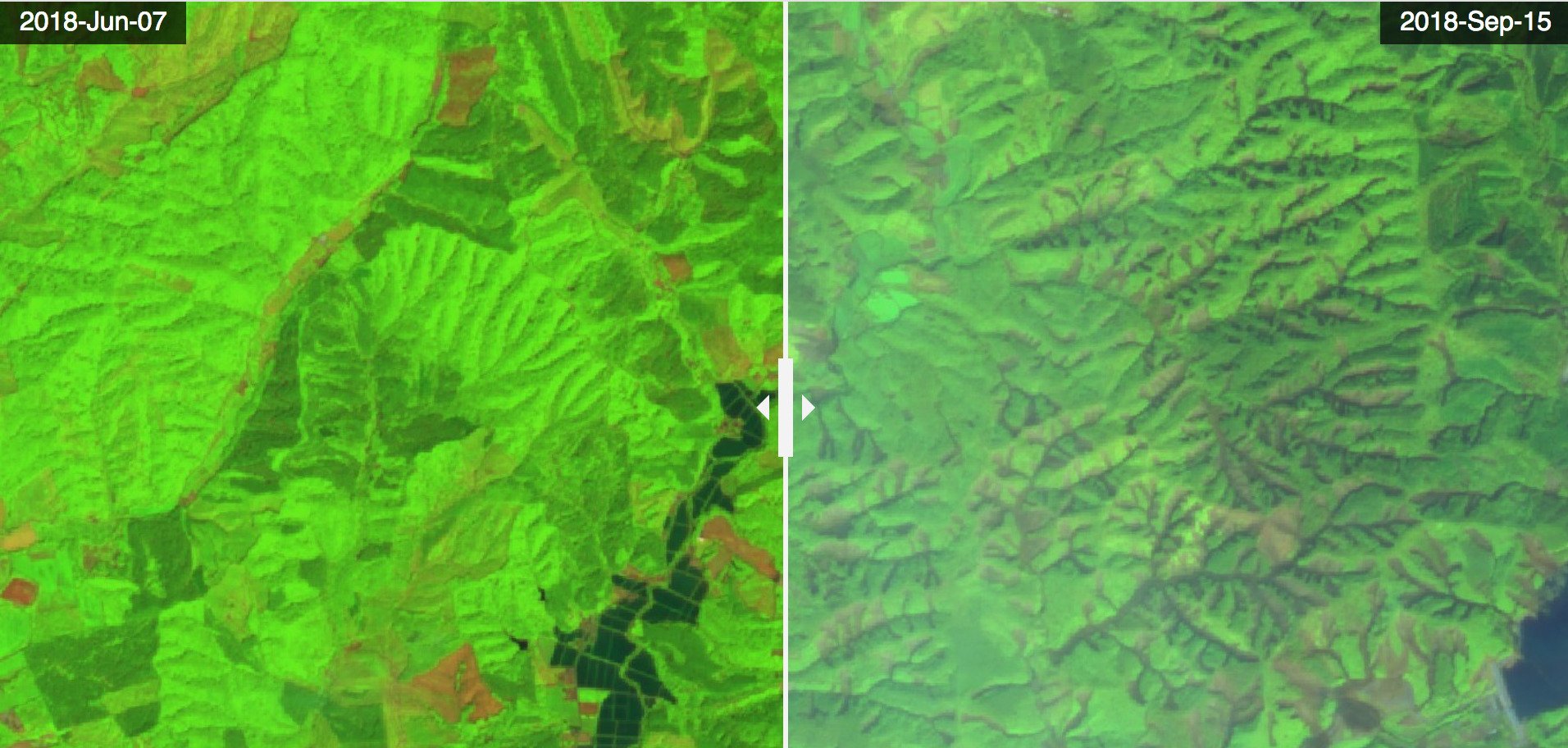Dozens of landslides after the 2018 Hokkaido earthquake
An earthquake with magnitude 6.7 occurred on 06 Sep 2018 in Hokkaido, Japan, killing at least 17 people and leaving nearly 3 million households in Hokkaido without electricity. The quake came two days after typhoon Jebi, « the strongest storm of 25 years« . Below is an image comparison near Atsuma dam lake in the south of Hokkaido, before and after the earthquake, showing multiple landslides in the forest areas. Both images were acquired by Sentinel-2 and are shown as false color composites of bands 11-8-2.

The heavy rainfalls brought by typhoon Jebi probably explain why the earthquake triggered so many landslides. I would like to count the landslides in this area, but the Sep 15 image is not yet available in my favorite image processing engine. I will check later.
Links:
– Google published a crisis map but it seems that the imagery is not publicly available Thanks to Laurent Longuevergne for letting me know about this!







